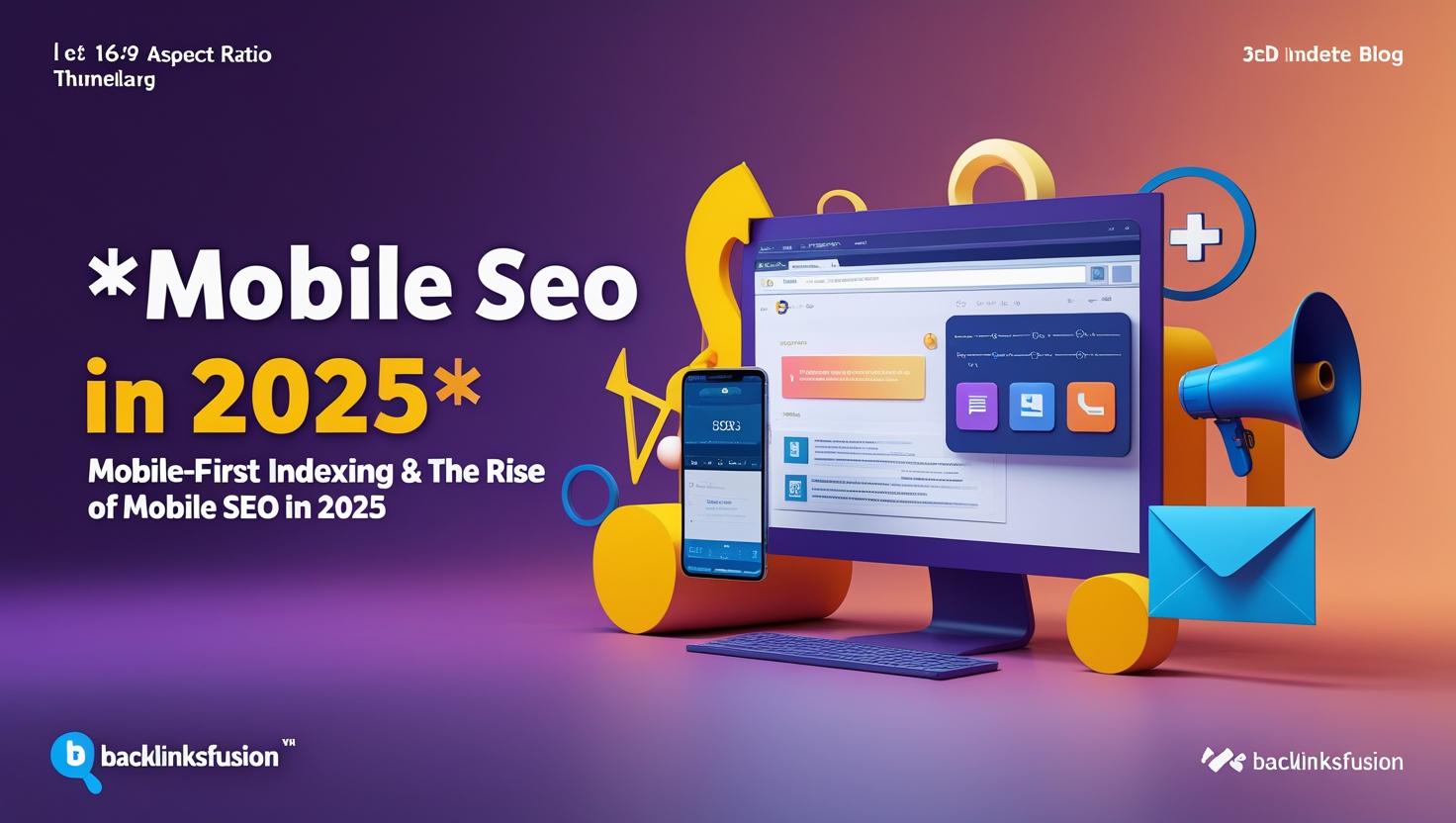Mobile-First Indexing & the Rise of Mobile SEO in 2025

The world has officially gone mobile—and Google knows it. With mobile-first indexing now the default for all websites, optimizing for mobile SEO is no longer optional; it’s critical. In 2025, if your website isn’t mobile-friendly, you’re not just losing users—you’re losing rankings.
Let’s dive into how mobile-first indexing works, why it matters more than ever, and how you can future-proof your website for mobile SEO success.
📌 What Is Mobile-First Indexing?
Mobile-first indexing means that Google primarily uses the mobile version of your website for crawling, indexing, and ranking in search results. This shift reflects how users interact with the web today—over 60% of global searches now come from mobile devices.
Before: Google indexed your desktop site first.
Now: Google indexes your mobile site first—even for desktop users.
If your mobile version is stripped down or poorly optimized, your entire SEO performance may suffer.
🚨 Why Mobile SEO Is Critical in 2025
Google’s default indexing method is mobile-first
Mobile traffic dominates most industries—especially local search, ecommerce, and news
Core Web Vitals and page experience signals prioritize mobile performance
Poor mobile usability = higher bounce rates = lower rankings
In other words: mobile optimization directly impacts your SEO visibility.
✅ How to Optimize for Mobile-First Indexing in 2025
1. 📐 Responsive Design Is Non-Negotiable
Your site must adapt to all screen sizes seamlessly. Responsive design ensures that content, buttons, and layouts work on every device without requiring a separate mobile version.
Pro Tip: Avoid m-dot (m.example.com) sites—they cause content parity issues and are outdated in a mobile-first world.
2. ⚙️ Same Content Across Desktop & Mobile
Google wants to see content parity. If your mobile site hides certain text, images, or schema that exists on the desktop version, you could lose rankings.
What to check:
Headings (H1, H2, etc.)
Meta tags
Structured data (schema markup)
Canonical tags
Internal linking
Make sure the mobile version has everything the desktop version does, just styled for smaller screens.
3. 🚀 Improve Mobile Speed (It’s a Ranking Factor)
Page speed on mobile is part of Google’s Core Web Vitals, and it directly affects both SEO and user experience.
Tools to measure & improve speed:
Google PageSpeed Insights
Lighthouse
GTmetrix
Quick fixes:
Use next-gen image formats (like WebP)
Enable lazy loading
Minimize render-blocking resources
Use a Content Delivery Network (CDN)
4. 👆 Optimize for Touch and UX
Mobile users navigate with their thumbs, not a mouse. Make it easy.
UX tips for mobile SEO:
Use large, tappable buttons (at least 48px)
Keep forms short and fields easy to fill
Avoid pop-ups and interstitials that cover content
Use sticky headers or nav bars for better navigation
A seamless UX keeps bounce rates low—and rankings high.
5. 📊 Use Mobile-First Analytics & Tracking
In 2025, analyzing mobile behavior separately is essential. Make sure your tracking tools (e.g., GA4, Hotjar, Microsoft Clarity) are set up to capture mobile session insights, such as:
Tap vs. click behavior
Scroll depth
Mobile conversion funnels
Session duration
This helps you find and fix mobile-specific friction points.
📈 Mobile SEO Trends to Watch in 2025
Voice Search Optimization
More mobile users are using voice commands. Optimize for conversational queries, FAQs, and local search intent.
Visual Search on Mobile
With tools like Google Lens, mobile users are increasingly searching using images. Add alt text, structured data, and optimize product images.
Progressive Web Apps (PWAs)
PWAs offer app-like performance via the browser. They're fast, installable, and work offline—great for mobile SEO and UX.
AI-Enhanced Personalization
Mobile search results are increasingly personalized based on location, habits, and intent. Structured data, local SEO, and high-quality content matter more than ever.
🧪 Test Your Site for Mobile-First Indexing
Use these tools regularly:
Google’s Mobile-Friendly Test
Search Console Mobile Usability Report
PageSpeed Insights (mobile tab)
Fix any red flags immediately.
🔚 Conclusion
In 2025, mobile-first isn’t just a trend—it’s the standard. With Google using mobile versions for indexing and ranking, your site’s mobile performance determines your search visibility. From responsive design and fast loading to seamless UX and mobile-focused analytics, every SEO decision must consider the mobile user first.

0 Comments